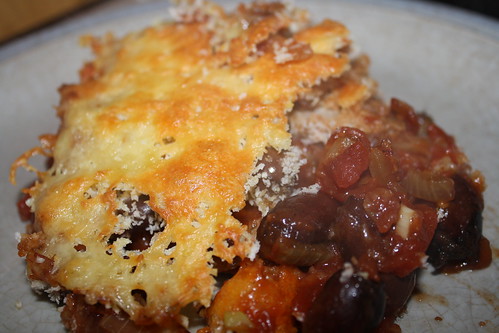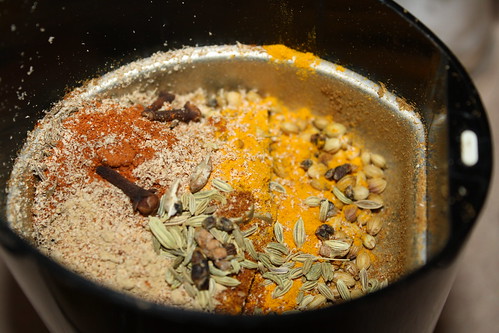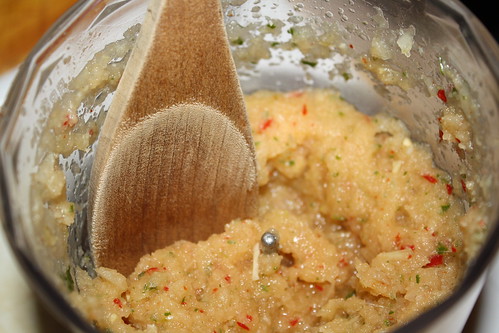Another cookbook that I won at some point, and which has also been sorely neglected, is The Complete Matthew Hayden Cookbook. Yes – you read that correctly, that Matthew Hayden. The one better known for his prowess with the willow than a wok.
This is a cookbook in which you’re more likely to find a recipe for bangers and mash than … um … something extremely complicated, fancy sounding and long winded. I chose my recipe by the tried and true method of opening the book on a random page and hit upon the veal schnitzel bake.
At first glance I thought “hmmm, probably not” (I always think the word “bake”, particularly when applied to savoury recipes, sounds particularly unappetising) but had a quick read of the recipe and it looked simple, quick and tasty.
When I actually came to make the dish, I found I had a small person attached to at least one leg, so there not much chance of checking the recipe, let alone following it too carefully! However, this isn’t something that needs careful measurement or attendance and (even better) you can prepare it in advance and have it in the fridge ready to go.
First take some veal schnitzels (I used 5 smallish ones from our butcher – already flattened out but NOT crumbed) and pan fry them. The recipe says to crumb them before frying and I did this with a couple but then realised this was completely pointless. It’s just a good way to create extra dish washing! As the schnitzels are thin and will be cooked in the assembled dish you just want to get some good colour on them. A minute or two on either side should do the job (naturally, ensure your pan is good and hot so you don’t steam/poach them – you may need to do this in multiple batches).
Remove the veal from the pan and set aside. Now make your tomato sauce, in the same pan – to take advantage of the pan juices.
I guess really you could make any tomato sauce you fancied but I did roughly follow what was in the book. Heat some olive oil in a pan and then add some finely sliced onion and garlic. The book’s recipe also used chilli at this point but the only fresh chillis we had were fierce and I was planning on feeding this to the baby (who, incidentally, is far more chilli tolerant than I ever give him credit …). When the onions were soft, in went a tin of crushed tomatoes, a sprinkle of oregano and a few generous handfuls of pitted black olives (I actually used Kalamata olives – have you noticed how difficult it is to buy Australian olives of either colour in mainstream retailers?!). Let this all cook down to thicken – you do want to cook a fair bit of moisture out of it because you don’t want your bake to end up soggy!
To assemble the bake, layer the veal in a baking dish and top with the tomato sauce. If you want to prepare ahead, stop here! Don’t put the bread crumbs on in advance – they’ll soak up any moisture and potentially leave the bake a bit dry.
When you’re ready to cook, cover thickly with bread crumbs (I used panko) and top with grated cheddar cheese – be generous here! You want a good cover of cheese – not only will it taste good but it will also stop the breadcrumbs burning if you have your oven up a bit high.
Pop in an oven preheated to 180°C and bake for a good 20 minutes or so. If the top isn’t looking golden and bubbling, increase the heat or finish off under the grill.
Serve piping hot (with vegetables or salad – naturally – got to get those 5 a day!).
This was tasty, quick and perfect on a cold winter weeknight.



